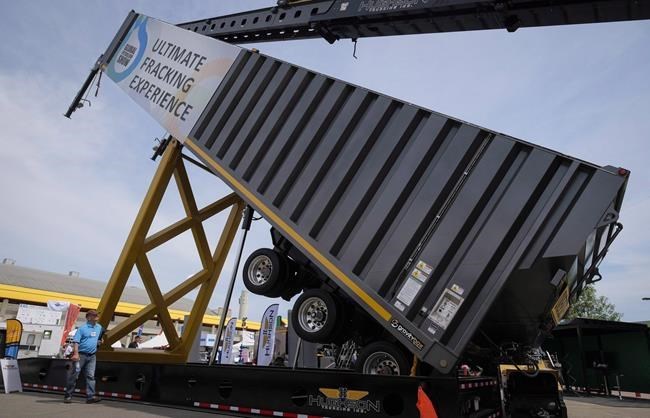 The Energy Ministry reached right to the ragged edge of accuracy when it claimed the scientific review of fracking in B.C. “found the regulatory framework to be robust, while also identifying areas for improvement.”
The Energy Ministry reached right to the ragged edge of accuracy when it claimed the scientific review of fracking in B.C. “found the regulatory framework to be robust, while also identifying areas for improvement.”
The report, leaked to the Times Colonist last month, is more than 200 pages long and is a dense technical study about all aspects of that prevalent oil-and-gas-drilling technique in northern B.C.
So the government could have highlighted any number of observations in its initial response to the official release of the document this week.
Its reaction was as above — it summarized the entire report by saying it concluded the regulations are “robust,” but could still be improved.
That is an extremely debatable takeaway. The full quote from the report’s summary is a bit more nuanced.
“The panel could not quantify risk because there are too few data to assess risk. Nevertheless, it is the view of the panel that current regulations under many acts appear to be robust. At the same time, insufficient evidence was provided to the panel to assess the degree of compliance and enforcement of regulations.”
So the regulations on paper might “appear” robust, but the panel couldn’t find enough information to conclude if they’re being followed or enforced.
And in some specific alarming cases, the panel makes it clear they are not. Take the section on dams, for instance. The panel noted a series of large earth dams built between 2011 and 2016 to retain water for fracking appear “to have escaped proper regulatory oversight.”
They were essentially classed as holding ponds, not dams, so they didn’t need some permits. One of them was 20 metres high and didn’t even have a spillway.
That’s an elementary safety feature. The dam regulations have since been tightened up, but the lack of a spillway was noted during the panel’s visit last year.
The regulations require regular tests of the spillways. But you can’t test a safety feature that doesn’t exist.
“The earth dam visited by the panel appears to be in violation, as such a spillway was not even constructed,” said the report.
There aren’t many places on Earth where you’d call the regulations “robust” when there’s a 20-metre-high dam built without permits that doesn’t have a spillway.
The government’s official response to the report also said that since the election, the NDP government has strengthened regulations and much of that work addresses concerns raised by the panel.
That’s the response by all governments to many investigations undertaken by the auditor general and others over the years. “We’ve already fixed the problems.”
Some gaping loopholes have been plugged in the past few years. But the scientific panel’s main general finding is that there are dozens of questions that need an enormous amount of research before they can be answered.
“Rising to meet these challenges will require a more detailed accounting of existing knowledge gaps and addressing these with science-based solutions.”
Fracking raises questions about the increase in minor earthquakes, storage of water, handling of wastewater, impact on water quality, safety of wells, and overall impact on the environment and human health.
The panel’s overarching conclusion was that it “could not assess with confidence whether risk is currently being managed or not.”
So most of its 97 recommendations are on the theme of needing many more answers.
The government is going to respond in May with a short-term action plan and follow up with a long-term plan in December. That time frame hints at the volume and the complexity of the work required.
Anyone whose first reaction is that the report concludes the regulatory regime is robust is reading it from a predetermined perspective.
That would be that fracking is a fundamental requirement of an entire sector of the B.C. economy that produces almost all the natural gas.
And that it underpins the $40-billion investment in the liquefied-natural-gas industry about to take shape. And that it’s going to continue no matter how many questions scientists raise about the impacts.
More studies might produce adjustments and refinements, but the drilling will continue.



